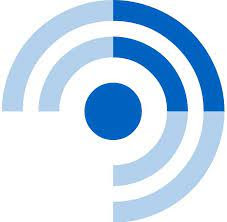
This remarkable 24-floor facility, spanning over 33,000 square meters, is China's most advanced provincial-level hub for disability services.
Since opening in late 2021 and gaining prominence during the 2022 Winter Paralympics, the centre has welcomed over 160,000 individuals with disabilities in just three years. It offers everything from vocational rehabilitation and short-term care to art therapy and employment training.
Yet beyond the numbers, what left the deepest impression on me was how this place truly embodies the belief that disability does not equal inability.
As I explored the centre, I saw firsthand the powerful role innovation plays in empowering people with disabilities. The tech exhibition on the first floor was nothing short of astonishing. More than 60 assistive technologies were on displayâ€"many of which I had the chance to try.
Among them were smart guide dogs powered by artificial intelligence, designed not only to provide companionship but also to assist with path planning and obstacle avoidance for visually impaired users.
The robotic guide dogs, modelled on quadruped robots, combined high-precision navigation with interactive remote support, enabling blind individuals to navigate unfamiliar environments safely.
The brain-controlled AI wheelchair stood out as a marvel of modern engineering, translating users' movement intentions into multi-directional control, thereby expanding mobility beyond what was previously imaginable.
I also experienced the Anti-H1 Pro walking assistant robot, which detects subtle lower limb movements and provides real-time support, easing strain and enhancing balance.
The AI walker exoskeleton helps patients regain mobility by assisting with walking and rehabilitation exercises. For individuals with hearing impairments, smart glasses like the Listener AR Caption Glasses and Star V Glasses convert speech to text in real time, supporting multilingual translation and bridging communication gaps.
Wearable devices equipped with AI imagingâ€"such as the Dongguang smart glasses and H1 Smart Blind Assistant Hatâ€"provide environmental awareness and obstacle alerts, ensuring safer navigation. Each of these innovations not only showcased cutting-edge technology but also reflected a strong commitment to making life more independent and inclusive for all.
But the Huiai Centre is more than just advanced devices. Its barrier-free architecture reflects universal design principles, with ramps replacing stairs, Braille signage, and fully accessible bathrooms and elevators.
The Winter Paralympics exhibition on the first floor was a moving tribute, featuring medals, torches, and silk-flower bouquets made by disabled artisansâ€"symbols of resilience and creativity.
The bookstore, stocked with Braille books and handicrafts, offered a welcoming space for reading and cultural exchange. The indoor ramp corridor, adorned with artwork by autistic children, offered a glimpse into the centre's inclusive spirit.
On the second floor, I visited the Fusion Cinema, where audio descriptions and subtitles make films accessible to both visually and hearing-impaired audiences, demonstrating how entertainment can be truly inclusive.
Nearby, the Kitchen and Beauty Workshop trains disabled artisans in baking and crafts, some of which have gained international recognition, such as works showcased during the Paris Paralympics.
Elsewhere, the centre supports children with cerebral palsy and autism through specialised rehabilitation, providing vital early interventions and subsidies to promote school integration.
The adult rehabilitation programs focus on rebuilding life skills and offering vocational training. One inspiring example is the Beijing Hope Home, where trainees have achieved a 95% self-care rate, and some earn up to $8,000 a month through remote work and handicrafts.
The short-term care floors offer fully accessible rooms with voice-activated features, adjustable beds, and safety systemsâ€"designed to serve elderly and disabled individuals, including those with dementia.
What stood out most from my visit was the undeniable message that technology, combined with compassion and inclusive design, can transform disability into a platform for possibility rather than limitation.
The Huiai Building is a vivid testament to this philosophy, proving that with the right tools and support, people with disabilities can participate fully in society, pursue their dreams, and lead independent lives.
This centre not only sets a global standard for disability services but also offers hope and inspiration worldwide, affirming that disability is not an endpoint, but a different way of experiencing the worldâ€"one that technology is increasingly helping to unlock and enrich.
















Christian Mugisha
